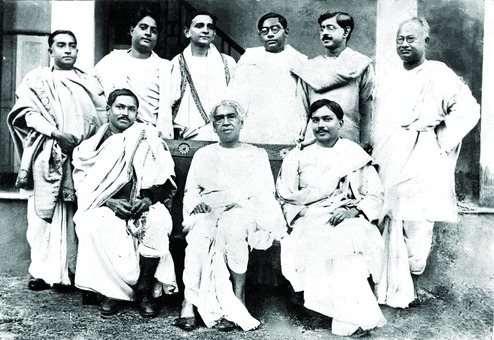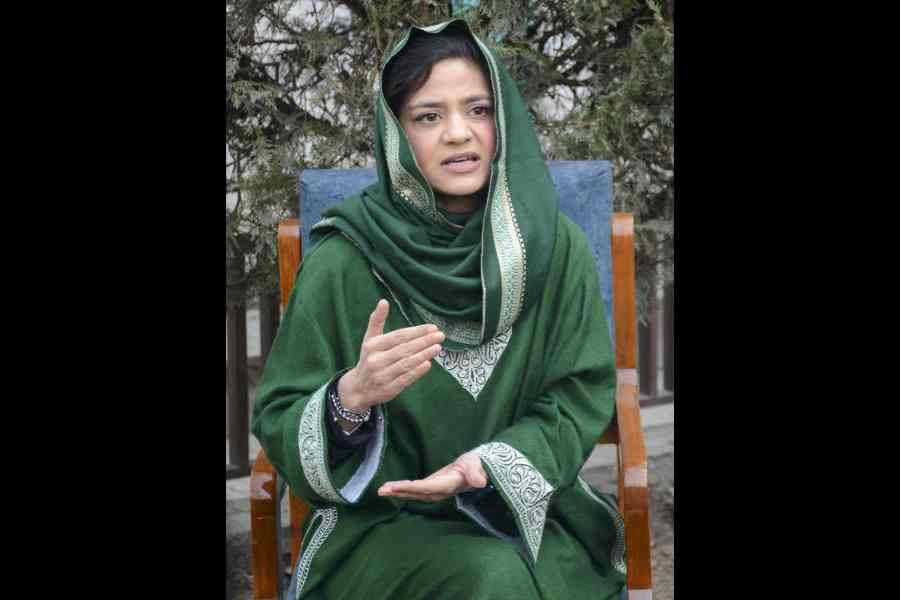
Astrophysicist Meghnad Saha left this world more than 60 years ago but his ionisation equation - the Saha Equation - still gets generous mentions at every session of any international astrophysical conference. That is how stellar his contribution is to the evolution of stellar astrophysics! The legendary British astrophysicist Arthur Eddington described Saha's theory of thermal ionisation as the twelfth most important landmark in the history of astronomy. "By formulating the ionisation equation in such an elegant way, Saha opened a new window to the stellar atmospheres for parametrising their temperature spectroscopically, which is used widely today," says stellar physicist Naslim Neelamkodan, of the National Astronomical Observatory in Tokyo, Japan.
The importance of Saha's work lies in its fundamentality. Just like every student of classical mechanics must learn Newton's equations and every student of relativistic mechanics Einstein's equations, every astrophysicist worth his name has to have an understanding of Saha's Equation - and the Chandrasekhar limit formulated by Nobel laureate S. Chandrasekhar. So Saha's relevance in his field is just as important as contemporary Satyendranath Bose's - who added to Einstein's Theory of Relativity and after whom the boson particle is named - in quantum physics and that of C.V. Raman of effect fame in spectroscopy. The fact that each of their theories is a pillar which forms the basis of their subjects today is what makes these four scientists legends who stand apart from the long list of other brilliant scientists who have come out of India. These four have become such household - rather, institutional - names in physics that modern scientists do not feel the need to cite their classic papers every single time (just like every researcher in gravitational physics today is not expected to cite Newton's laws on them). That is perhaps the best compliment and honour a scientist can achieve!
There are many numerical codes and calculations performed by astrophysicists today that employ Saha's famous equation to find ratios and combinations of different chemical species in various types of stars in our universe. That is what makes his work relevant to a stellar physicist even today. "The Saha equation is not only relevant for the classification of stars in terms of their surface temperature, but also for correctly predicting the temperature & mass-loss mechanism in massive stars. Even with today's fastest computers we have found that the state-of-the gas is still in excellent agreement with the more approximate - but far more insightful - equation of Saha. This is truly extra-ordinary," says Jorick Vink, vice-president of Commission on Massive Stars, International Astronomical Union in the UK.
Distinguished Norwegian astrophysicist Svein Rosseland wrote in the introduction of his textbook: "It was the Indian physicist Meghnad Saha who (in 1920) first attempted to develop a consistent theory of the spectral sequence of the stars from the point of view of atomic theory. The impetus given to astrophysics by Saha's work can scarcely be overestimated, as nearly all later progress in this field has been influenced by it and much of the subsequent work has the character of refinements of Saha's ideas." While his work is world famous, the man himself has sadly been forgotten. "Despite these equations forming one of the main pillars of stellar spectra today, we never learnt who this important scientist was and how he came up with this excellent equation," says Huri Tugca Sener Satir, stellar physicist at the Korean Astronomy and Space Science Institute, South Korea.
Nobel laureate Chandrasekhar wrote: "Meghnad Saha's place in the history of astrophysics and in the history of modern science in India is unique". Unfortunately the government of India has never thought so. While other stalwart scientists such as Chandrasekhar, Satyendranath Bose and C.V. Raman have been awarded the highest civilian honours (Padma Vibhushan or Bharat Ratna), Saha - who most people believe to be in the same league - did not win any awards in his native land. Most Indian academics of today are not even aware of this grave omission. The one recognition he did get came from the British - he was elected a Fellow of the Royal Society. Ironic, because Saha was always very vocal about his support for those patriots who were fighting the British Raj with arms.
Unlike many scientists who stick to their ivory towers - and many more who even today prefer to stay politically correct - Saha was politically and socially active, protesting anything he deemed unfair (and there was a fair bit because these were the days before independence) and vocally supporting anything he believed in. His social conscience was probably sparked off by his difficult childhood; he was born into a poor low caste Hindu family. His personal transition was remarkable; the star physicist had started off working in a grocery shop and no one had been willing to have him at their table in the college hostel dining room as he was an "untouchable".
Saha was also an active institution builder, contributing immensely to the foundation and growth of various research institutions such as the Institute of Nuclear Physics in Calcutta (later named after him), the Indian Institute of Science at Bangalore, the National Academy of Science and the Indian Association for Cultivation of Science.
The Indian administration recognised his worth after his death by releasing a commemorative postage stamp and naming a top research institute (the Saha Institute of Nuclear Physics) in his honour. Saha would perhaps have got more joy from the fact that young students and researchers continue to discuss his equation every day at numerous academic institutions all over the world.
The author is an Indian astrophysicist who currently works at the University of Oslo in Norway










